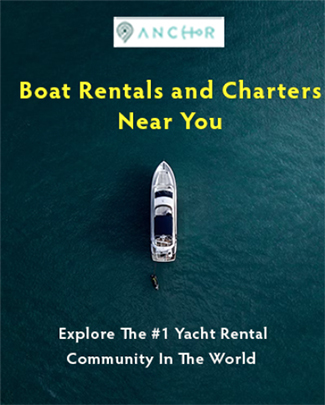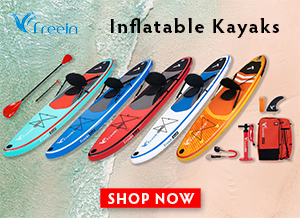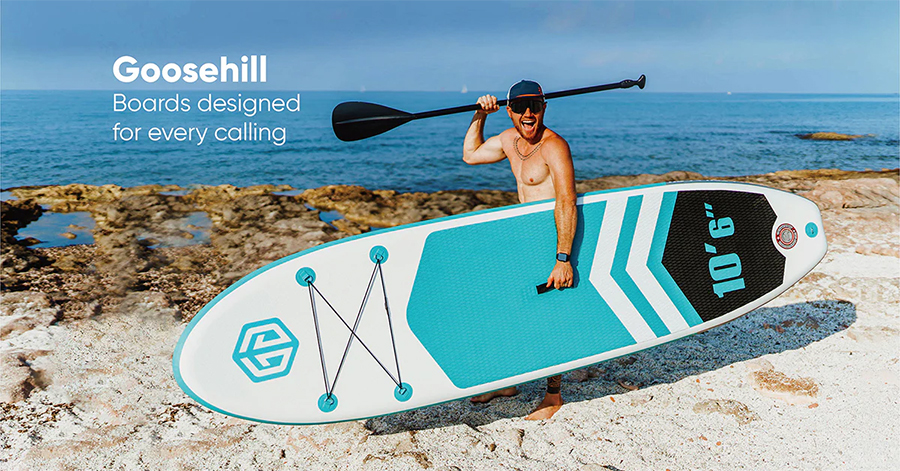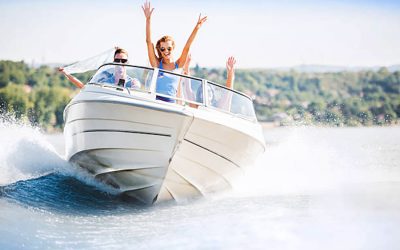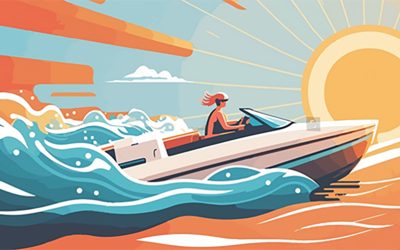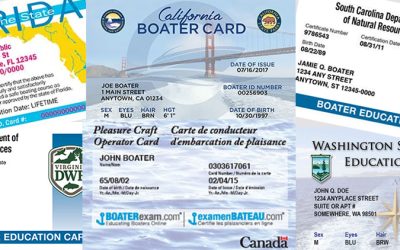Efoil For Beginners - What You Need Yo Know To Start Your Efoil Journey
What Are Efoils?
Efoiling is a thrilling and innovative water sport that combines the excitement of surfing with the convenience of electric propulsion. But what exactly are efoils?
Well, put simply, efoils are electric hydrofoil boards that allow riders to glide effortlessly above the water’s surface, propelled by an electric motor attached to a foil mounted underneath the board. This unique technology enables riders to experience a whole new level of freedom and exhilaration on the water.
At first glance, an efoil might look like a regular surfboard or paddleboard, but upon closer inspection, you’ll notice some distinct differences. The most noticeable feature is the hydrofoil—a wing-shaped structure that extends below the board into the water.
This hydrofoil serves as a lifting mechanism that raises the board out of the water as speed increases. As a result, riders experience reduced drag and an incredibly smooth ride.
To understand how an efoil works, it’s essential to grasp its basic components. Firstly, there’s the board itself—the sturdy platform on which you stand while riding.
Next comes the foil—an assembly consisting of wings and struts attached to a mast—which provides lift and stability. Connected to this foil is an electric motor powered by a battery pack located on top of or inside the board for optimal weight distribution.
With these components in place, when you activate your efoil—via a handheld remote control—you’ll feel like you’re hovering above the surface as water flows beneath your feet. The motor propels you forward while simultaneously generating lift through its interaction with airflow over and under the hydrofoil wings.
It’s truly exhilarating! One of the significant advantages of efoiling for beginners is its user-friendly nature; even those with limited experience can quickly get started thanks to advancements in design and technology aimed at making it accessible for everyone.
For beginners, it’s advisable to choose an entry-level model specifically designed to provide stability and ease of use while learning. While cost can be a consideration when exploring this exciting sport, prices for efoils range from a few thousand dollars for entry-level models up to several tens of thousands for high-end options.
So if you’re ready to take your love for watersports to new heights and experience the thrill of flying above the water’s surface on an electric hydrofoil board—efoiling is calling your name! With dedication and practice, you’ll soon find yourself gliding effortlessly over calm waters or conquering exhilarating waves—all while feeling like you’re riding on pure magic!
How Do eFoils Work?
Efoils, also known as electric hydrofoils, are a fascinating combination of advanced technology and watersports. At first glance, they may seem like something out of a science fiction movie, but understanding how efoils work is actually quite simple.
These innovative watercraft rely on hydrofoil technology to provide an exhilarating and smooth ride over the water’s surface.
The key component of an efoil is the foilboard, which resembles a large surfboard with a hydrofoil attached underneath. The hydrofoil consists of a wing-like structure that extends below the board into the water.
When in motion, this wing generates lift as it moves through the water, allowing the rider to glide effortlessly above the surface. But how does an efoil generate forward propulsion?
That’s where the electric propulsion system comes into play. Located within the board itself is an electric motor connected to a propeller or impeller.
This motor draws power from a rechargeable battery pack and uses it to spin the propeller or impeller rapidly. As a result, water is forced backward with significant force, creating thrust that propels the efoil forward.
Additionally, efoils allow you to effortlessly navigate through various conditions such as choppy waters or strong currents due to their foiling design. The ability to fly above water not only provides an incredible sensation but also minimizes drag and creates smoother rides.
What Are The Different Types Of Efoils
When it comes to efoiling, there are various types of efoils available in the market. Each type offers unique features and characteristics, catering to different preferences and skill levels of beginners.
Let’s take a closer look at two popular types: foilboards and electric propulsion systems.
Foilboards, also known as hydrofoil boards, are the foundation of efoils. These boards consist of a buoyant platform with a hydrofoil attached beneath it.
The hydrofoil consists of a mast, wings, and stabilizer, which work together to lift the board out of the water as speed increases. This design allows for a smooth and efficient glide above the water’s surface.
Foilboards provide excellent stability and control while riding, making them an ideal efoil for beginners who are just starting their efoiling journey. On the other hand, electric propulsion systems play a crucial role in powering efoils forward.
These systems consist of an electric motor mounted on the board that drives a propeller or jet pump to propel the rider across the water’s surface. Electric propulsion systems offer significant advantages such as silent operation and zero emissions, contributing to eco-friendly watersports.
They also provide precise control over speed and acceleration through remote controls or handheld throttles. When choosing between foilboards and electric propulsion systems for your beginner efoiling experience, consider factors such as personal preference, intended use (e.g., leisurely cruising or adrenaline-inducing tricks), ease of learning, cost considerations (including initial investment and maintenance).
Foilboards
Foilboards One of the most critical components of an efoil setup is the foilboard itself. These specialized boards are designed to work in conjunction with the hydrofoil technology, providing stability and control as you glide above the water’s surface.
Foilboards come in various shapes and sizes, catering to different skill levels and riding preferences. When choosing a foilboard, beginners should prioritize stability and ease of use.
Look for models that have a larger surface area on the deck, providing a stable platform for learning and building confidence. Additionally, consider boards with softer rails that allow for forgiving maneuvers and smoother transitions.
The deck is typically made from durable materials such as carbon fiber or fiberglass to ensure strength while remaining lightweight. The mast attaches to the deck and holds the hydrofoil securely in place.
Masts come in various lengths, affecting how high you ride above the water’s surface. Shorter masts are recommended for beginners as they provide more stability during initial learning stages.
Electric Propulsion Systems
When it comes to electric propulsion systems in efoils, there are a few key components and technologies that enable these remarkable machines to glide effortlessly over the water’s surface. One of the primary components is the electric motor, which is responsible for generating the necessary power to propel the efoil forward.
These motors are typically brushless and can be located either on top of the foil or inside a pod attached to the board. The electric motor is connected to a battery pack, which supplies the required energy for extended rides.
Lithium-ion batteries are commonly used in efoils due to their high energy density and rechargeable capabilities. The battery pack can either be integrated into the board or attached externally for easy removal and recharging.
To control the speed and direction of an efoil, an electronic controller is employed. This controller acts as a bridge between the user’s inputs and the motor, regulating power delivery based on throttle commands from a handheld remote control.
The remote control allows riders to adjust their speed as they become more comfortable with efoiling and navigate different water conditions. In terms of technology, hydrofoil systems play a crucial role in efoils’ performance.
A hydrofoil refers to a wing-like structure mounted beneath the board’s surface that generates lift when moving through water. As speed increases, hydrofoils create enough lift force for riders to rise above the water surface, reducing drag drastically.
This innovative technology provides an extraordinary gliding sensation as you effortlessly cruise over waves and currents. Efoiling offers numerous benefits compared to traditional surfboards or other watersports equipment.
Not only does it provide an exhilarating experience that combines surfing, wakeboarding, and flying all into one sport, but it also allows riders to explore areas they might not have access to otherwise—remote beaches, secluded coves, or pristine lakes ideal for efoiling adventures.
Some efoils are designed with stability and maneuverability in mind, offering wider board shapes and lower speeds for easier learning. These entry-level models often come with user-friendly remote controls and adjustable speed settings to help novices gradually develop their efoiling skills.
Indeed, electric propulsion systems lie at the heart of efoiling, enabling riders to embark on thrilling adventures over water surfaces. Whether you opt for a brushed or brushless motor, an integrated or removable battery pack, or a user-friendly remote control, the technology behind efoil propulsion ensures a smooth and exciting ride every time you take your board out on the water.
How To Get Started On Efoils As A Beginner
Getting started with efoiling can be an exciting and exhilarating experience, but it’s important to approach it with a focus on safety. Before you even think about stepping onto an efoil board, make sure you have the proper protective gear.
A well-fitting helmet, a life jacket or personal flotation device (PFD), and appropriate wetsuit or rash guard are essential for your safety on the water.
Gloves can help prevent blisters when gripping the remote control for extended periods of time.
There are several factors to consider when making this decision, including your skill level, budget, and desired features. Entry-level models are often more forgiving and stable than advanced ones, making them ideal for beginners.
Before hopping onto an efoil board for the first time, familiarize yourself with basic safety guidelines specific to efoiling. Always check weather conditions before heading out – calm waters are generally preferred over wavy conditions as they provide a more stable riding experience for beginners.
As you progress beyond the basics, you may want to explore advanced maneuvers like carving and pumping. Additionally, there are plenty of customization options available for those who want to upgrade their efoil setup with different components or accessories such as higher-capacity batteries or specialized fins.
Remember that patience is key when learning to efoil. It takes time to develop the necessary skills to control speed and direction effectively.
Choosing The Right Efoil As A Beginner
When it comes to choosing the right efoil, there are a few key factors to consider. First and foremost, as a beginner, it’s important to look for models that are labeled as “beginner-friendly” or “entry-level,” as these often have features and specifications tailored to help you get started with ease. One crucial aspect to consider is the stability of the efoil board.
As a beginner, you’ll want a board that offers ample stability and forgiveness. Look for wider boards with larger surface areas, as these provide more stability when learning how to balance on the water.
Additionally, pay attention to the shape of the board’s hull. A flatter hull design helps with stability and makes it easier for beginners to find their balance.
Learning The Basics On An Efoil As A Beginner
Stance and Posture
Learning the Basics When it comes to efoiling for beginners, mastering the basics is crucial.
It’s essential to develop a solid foundation of skills that will allow you to progress and enjoy this exhilarating watersport to the fullest. Let’s delve into some key aspects of learning the fundamentals of efoiling.
So, let’s dive into some key tips on how to achieve the ideal stance and posture while efoiling.
1. Find Your Balance: Start by standing in the center of the board with your feet parallel to each other, about shoulder-width apart.
Distribute your weight evenly on both feet to maintain balance. Keep your knees slightly bent, allowing for greater flexibility and shock absorption when riding over choppy waters or waves.
2. Engage Your Core: To maintain stability on an efoil, engage your core muscles throughout the ride. This not only enhances your balance but also provides better control over speed and direction changes.
Imagine you are balancing on a tightrope – this mental image can help you find that perfect equilibrium.
3. Look Forward: Keep your gaze fixed ahead, focusing on where you want to go rather than looking down at your feet or constantly checking the remote control display.
By keeping your eyes forward, you can anticipate any obstacles or changes in water conditions and react accordingly.
4. Relax Your Upper Body: While it’s essential to engage your core, try to keep your upper body relaxed and fluid in movement.
Avoid stiffening up as it can interfere with maintaining balance and limit your ability to respond quickly if needed. Remember that achieving an optimal stance and posture may require practice and adjustment based on personal preferences and riding style.
Proper Body Positioning
When it comes to efoiling, maintaining the correct body positioning is crucial to have a smooth and enjoyable ride.
Proper body positioning not only ensures stability but also enhances control over the efoil, making it easier to navigate through the water. To start, stand with your feet shoulder-width apart on the efoil board.
Distribute your weight evenly between both feet, keeping your knees slightly bent. This stance will provide you with a stable foundation as you glide across the water.
As you gain confidence and want to increase your maneuverability, consider adjusting your body position based on the direction you want to turn. To make a left turn, shift more weight onto your right foot and lower your center of gravity by bending your knees further.
Conversely, for a right turn, shift more weight onto your left foot and lower yourself accordingly. It’s important to note that while maintaining balance is essential on an efoil board, try not to tense up excessively or grip the board too tightly.
Relaxation in both mind and body will allow for better responsiveness and adaptability when riding. By mastering proper body positioning techniques on an efoil board, beginners can ensure stability and improve their overall control during their adventures on the water
Controlling Speed and Direction
Controlling Speed and Direction When it comes to efoiling, one of the key skills to master is controlling your speed and direction.
Let’s dive into some tips and techniques that will help you navigate the efoil with finesse. To control your speed, it’s essential to understand how the electric hydrofoil operates.
As you tilt the remote control forward, the motor engages, propelling you forward and increasing your speed. Conversely, tilting it backward slows you down.
It’s important to start off at a comfortable pace and gradually increase your speed as you gain confidence on the board. Remember that maintaining balance is crucial in controlling speed; a slight shift in weight can make a difference in how fast or slow you go.
Now let’s talk about direction. Steering an efoil is similar to steering a surfboard or any other watercraft – by shifting your weight and using subtle movements of your feet.
To turn left, gently lean your body weight towards the left side of the board while keeping your feet aligned with that direction. The same principle applies for turning right – shift your weight towards the right side of the board.
It’s important not to make sudden movements or overcompensate; instead, focus on making smooth transitions in order to maintain stability and control.
Don’t be discouraged if it takes some time to get comfortable – remember that efoiling is all about having fun on the water while enjoying an exhilarating ride!
Understanding The Remote Control
This device serves as your connection to the electric hydrofoil, allowing you to control its speed and direction.
Think of it as your trusty command center on the water. The remote control typically consists of a handheld unit with various buttons or levers, each serving a specific function.
Some remotes may have a display screen that provides real-time information about your efoil’s battery life, speed, and other important details. Before you even step foot on an efoil board, it’s essential to thoroughly understand how your remote control operates.
Typically, there will be controls for acceleration and deceleration, as well as steering. Some remotes may also have additional features such as different speed modes or safety mechanisms like an emergency stop button.
Once you feel comfortable with the basic functions, practice manipulating them while off the water before attempting any maneuvers in a real efoiling session. This will help build muscle memory and ensure that you can confidently operate the remote control without distractions or safety concerns.

What Are Some Common Issues Beginners Encounter On An Efoil?
Efoiling, while exhilarating and seemingly effortless once mastered, presents a unique set of balance challenges for beginners. Unlike traditional surfing, which relies on waves and a larger board for stability, efoiling requires precise balance control on a smaller platform that hovers above the water.
1. Finding Your Center:
One of the initial hurdles is finding your center of gravity on the efoil board. Unlike a stable surfboard, the efoil’s hydrofoil design makes it susceptible to even the slightest weight shifts. This can lead to wobbles and unintended turns, particularly for those unaccustomed to standing on a moving platform.
2. Mastering Throttle Control:
Adding to the balance equation is the efoil’s throttle control. Accelerating too quickly or making abrupt changes in speed can easily throw you off balance and cause you to lose control. Learning to modulate the throttle smoothly and progressively is crucial for maintaining stability.
3. Overcoming Wind and Waves:
While efoiling offers the freedom of riding on calm water, even slight wind and waves can significantly impact your balance. Wind gusts can push the board in unexpected directions, while waves can cause the efoil to rock and pitch, requiring constant adjustments to maintain your center of gravity.
4. Building Core Strength:
Balancing on an efoil engages your core muscles to a greater extent than many other sports. This can be challenging for beginners, as their core muscles may not be adequately conditioned for the constant engagement required for maintaining stability.
5. Mental Focus and Concentration:
Efoiling demands a high level of mental focus and concentration. You need to be constantly aware of your body position, the movement of the board, and the surrounding environment. Any lapse in focus can easily lead to a loss of balance and a potential tumble into the water.
Overcoming the Challenges:
Despite the inherent challenges, efoiling is a rewarding and enjoyable activity that can be mastered with practice and dedication. Taking lessons from experienced instructors, focusing on core strength training, and practicing in calm conditions can significantly accelerate your progress and help you achieve the exhilarating sensation of gliding effortlessly above the water.
Calm Water vs. Waves - Choosing The Right Conditions As A Beginner
Calm Water: The Ideal Learning Ground
For beginners taking their first steps in the exciting world of efoiling, the choice between calm water and waves can be a crucial one. Both offer unique benefits and challenges, and understanding the differences will help you decide which environment best suits your skill level and desired experience.
Stability and Control: Flat water provides the perfect platform to practice balance and control without the added complexity of waves. This allows beginners to focus on mastering the fundamentals of efoiling and gaining confidence before venturing into choppier waters.
Reduced Risk: Calm water minimizes the risk of falling and injury, allowing beginners to learn and progress at their own pace without fear or intimidation.
Mental Clarity: The absence of waves allows beginners to focus their mental energy on mastering the efoil’s controls and maintaining balance, rather than having to constantly react and adapt to changing conditions.
Waves: Adding Excitement To Your Ride
Thrilling Experience: Riding waves on an efoil adds a layer of excitement and challenge to your experience. It allows you to practice carving, turning, and maneuvering in dynamic conditions.
Developing Skills: Navigating waves requires advanced skills in balance, control, and anticipation. Mastering these skills can significantly enhance your overall efoiling proficiency.
Variety and Adventure: Riding waves opens up a wider range of riding possibilities and allows you to explore different bodies of water.
The Perfect Choice for Beginners
While experienced efoilers can thrive in both calm and choppy conditions, calm water is generally considered the safer and more suitable environment for beginners. It provides the ideal setting to learn the basics, build confidence, and develop the essential skills needed for successful efoiling.
Here are some additional tips for beginners:
Start small and progress gradually. Don’t attempt to tackle big waves or strong currents until you have mastered the basics in calm water.
Take lessons from a qualified instructor. This will help you learn proper technique and develop safe riding habits.
Be patient and persistent. Learning to efoil takes time and practice. Don’t get discouraged if you don’t master it overnight.
Most importantly, have fun! Efoiling is a great way to enjoy the outdoors and get some exercise.
Your First Efoil Ride As A Beginner
Advanced Maneuvers: Progressing Beyond The Basics
Carving: Why Learn To Carve?
Carving is a fundamental maneuver in efoiling that takes you beyond gliding in a straight line and adds a whole new level of excitement to your ride. It involves smoothly turning the board while leaning your body into the turn, creating a graceful arc on the water.
Why Learn to Carve?
There are many reasons why beginners should learn to carve on their efoil:
Increased Control: Carving improves your balance and control over the board, allowing you to navigate tighter turns and maneuver in more challenging conditions.
Enhanced Speed: Carving allows you to generate more speed by utilizing the energy of the turn.
Increased Fun: Mastering the carve adds a whole new dimension to your efoiling experience, making it more dynamic and engaging.
The Essential Steps of Carving:
Start with a comfortable speed: Begin by practicing carving at a moderate speed to get a feel for the motion.
Shift your weight: Lean your body into the direction you want to turn, applying more pressure on the front foot and slightly raising the back heel.
Turn the board: Gently turn the board in the direction you are leaning, using your hips and shoulders to guide the movement.
Maintain balance: Keep your core engaged and adjust your weight distribution as needed to maintain balance throughout the turn.
Practice and refine: Continue practicing carving in both directions and on different water conditions to improve your technique and confidence.
Tips for Beginners:
Start in calm water: Practice carving in calm water first until you get comfortable with the motion before venturing out into choppier conditions.
Focus on smooth transitions: Make smooth and gradual transitions between straight gliding and carving to avoid losing balance.
Don’t be afraid to fall: Falling is a natural part of the learning process. Don’t get discouraged, analyze what went wrong and try again.
With practice and dedication, mastering the carve will unlock a whole new world of possibilities on your efoil. Get out there, explore the waters, and carve your way to efoiling mastery!
Pumping: Why Learn To Pump?
Pumping is an essential technique in efoiling that allows you to generate additional speed and lift, extending your ride time and opening up new possibilities for exploration and maneuvers.
Why Learn to Pump?
There are many benefits to learning to pump on your efoil:
Increased Speed: Pumping allows you to generate more speed than relying solely on the battery, allowing you to cover greater distances and experience the exhilarating feeling of flying across the water.
Extended Ride Time: By supplementing the battery’s power with your pumping efforts, you can significantly extend your ride time, allowing you to explore further and stay out on the water longer.
Improved Control: Mastering the pump motion requires good balance and coordination, which in turn improves your overall control over the efoil and allows you to navigate more challenging conditions.
Added Fun: Pumping adds a dynamic element to your efoiling experience, making it more engaging and rewarding.
The Basics of Pumping:
Pumping involves repeatedly pushing down on the board and then lifting it up, using the motion to generate lift and forward momentum.
Here are the main steps involved:
Start with a stable base: Ensure you have good balance and control over the efoil before attempting to pump.
Bend your knees: Bend your knees slightly and engage your core muscles to prepare for the pumping motion.
Push down and lift: Push down on the board with your front foot and then lift it up, creating a pumping motion.
Coordinate your body: Synchronize your arm movements with the pumping motion for added power and efficiency.
Find your flow: Experiment with different pumping tempos and techniques to find what works best for you and your efoil setup.
Tips for Beginners:
Start slow and gradually increase your speed: Don’t try to pump too fast at first. Begin with slow, controlled pumps and gradually increase your speed as you gain confidence.
Focus on your timing: The key to successful pumping is good timing. Coordinate your body movements and pumping motion for maximum efficiency.
Practice in calm water: Learn to pump in calm water before attempting it in choppier conditions.
Pumping is a valuable skill that can enhance your efoiling experience in many ways. With practice and dedication, you can master the pump motion and unlock a whole new level of efoiling possibilities.
Take Your Efoil To The Next Level: Upgrade Your Setup
You’ve mastered the basics of efoiling and are craving more. The thrill of gliding across the water is exhilarating, and you’re ready to push your limits and explore the full potential of this incredible sport. But how do you take your efoiling to the next level?
Upgrading your efoil setup can be a great way to enhance your experience and unlock new possibilities. Here are some key areas where you can consider upgrading:
1. Board:
- Size: If you’ve been riding a beginner-friendly board, consider upgrading to a smaller, more performance-oriented board. This will allow for greater maneuverability and responsiveness, perfect for carving and advanced maneuvers.
- Construction: Opt for a board made with high-quality materials like carbon fiber for increased rigidity, lighter weight, and better performance.
- Tail design: Different tail designs offer different handling characteristics. A swallow tail provides more control and stability, while a rounded tail offers better maneuverability for carving.
2. Wing:
- Front wing: A larger front wing will provide more lift and stability, while a smaller wing will offer greater speed and agility. Choose a wing that best suits your riding style and intended use.
- Back wing: The size and angle of the back wing affect the board’s stability and turning radius. Experiment with different configurations to find the perfect setup for your preferences.
- Construction: Consider a carbon fiber wing for increased stiffness and reduced weight, leading to better performance.
3. Battery:
- Capacity: Upgrade to a higher-capacity battery for longer ride times, allowing you to explore further and venture out on longer journeys.
- Charging time: Choose a battery with a faster charging time to minimize downtime and maximize your time on the water.
- Weight: A lighter battery will improve the board’s overall performance and agility.
4. Accessories:
- Foil cover: Protect your foil from damage during transport and storage.
- Foot straps: For a more secure and locked-in feeling, consider adding foot straps to your board.
- Carrying bag: A dedicated efoil carrying bag makes transport and storage easier and protects your equipment from damage.
Remember: Before purchasing any upgrades, consider your riding style, skill level, and budget. Consulting with a knowledgeable efoil shop or instructor can help you choose the right upgrades for your specific needs and preferences.
Upgrading your efoil can be a rewarding investment that elevates your riding experience and unlocks new possibilities. With the right upgrades, you can carve harder, turn tighter, and explore further, taking your efoiling to the next level and opening up a whole new world of thrills and excitement on the water.
Efoil For Beginners: Why Beginners Should Take An Instuction Course
Efoils can also be challenging to learn to use, especially for beginners. For this reason, it is important for beginners to take an instruction course before heading out on their own.
There are several reasons why beginners should take an efoil instruction course:
Safety: Efoils are powerful machines and can be dangerous if not used properly. An instruction course will teach you how to use the efoil safely and avoid potential hazards.
Efoil safety involves learning about the different parts of the efoil, how to operate it properly, and how to avoid collisions. It also includes understanding the wind and water conditions, and knowing your own limits.
Technique: Learning the proper technique for efoiling is essential for success. An instruction course will teach you how to stand up, balance, and turn the efoil.
Efoil technique involves understanding how to control the speed of the efoil, how to turn, and how to stop. It also includes learning how to fall safely.
Confidence: Taking an instruction course can give you the confidence you need to go out and enjoy efoiling on your own.
Knowing that you have the skills and knowledge to efoil safely can give you the confidence you need to go out and enjoy the experience.
Fun: Efoiling is a lot of fun, but it can be even more fun when you know what you’re doing. An instruction course will help you get the most out of your efoil experience.
By learning the proper technique and gaining confidence, you can focus on enjoying the feeling of gliding across the water.
Efoil for Beginners: Riding The Electric Wave
Efoiling, also known as electric hydrofoiling, is one of the latest and most thrilling additions to the world of eco-friendly watersports. Combining the excitement of surfing with the enhanced maneuverability of hydrofoil technology, efoils have quickly gained popularity among water sports enthusiasts around the globe.
At its core, an efoil is a special type of surfboard equipped with a battery-powered electric propulsion system that propels riders above the water’s surface using a hydrofoil—a wing-like structure located beneath the board. This innovative technology allows riders to glide effortlessly over the water, giving them an exhilarating sensation that is truly unmatched.
If you are new to efoiling, you might find yourself wondering how these incredible machines work. Well, it all starts with understanding the components that make up an efoil.
The key parts include the foilboard itself, which serves as your platform for riding and balancing on; and the electric propulsion system—comprising a motor and battery—that provides thrust and power to keep you soaring above the water’s surface. Additionally, there’s a wireless remote control that allows you to adjust your speed and control your movements while riding.
When it comes to choosing an efoil for beginners, it’s essential to consider factors such as stability, ease of use, and overall durability.
This site uses affiliate links which may earn a commission at no additional cost to you
5-Star Efoil Lessons For Beginners
Check Out Related Posts
Spring Break 2025: Top Spring Break Boat Charter Destinations
Spring break boat charters offer a refreshing twist on the traditional spring break experience, providing an escape from the crowds and chaos often associated with this time of year. While the typical image of spring break may evoke scenes of crowded beaches and rowdy...
9 Best Boating Lakes in Florida: The Complete Guide To Fun In The Sun
Welcome to Florida, where the sun dances on the water and adventure awaits around every bend of its countless lakes. In this aquatic paradise, boating enthusiasts find themselves spoiled for choice, with an array of the best boating lakes in Florida offering endless...
How To Get A Boating License In 2025 – (U.S And Canada)
Having a boating license is of utmost importance for anyone who wishes to operate a watercraft, regardless of its size or type. Whether you are planning to navigate a pontoon boat, jet ski, sailboat, or any motorized vessel, understanding the significance of obtaining...















